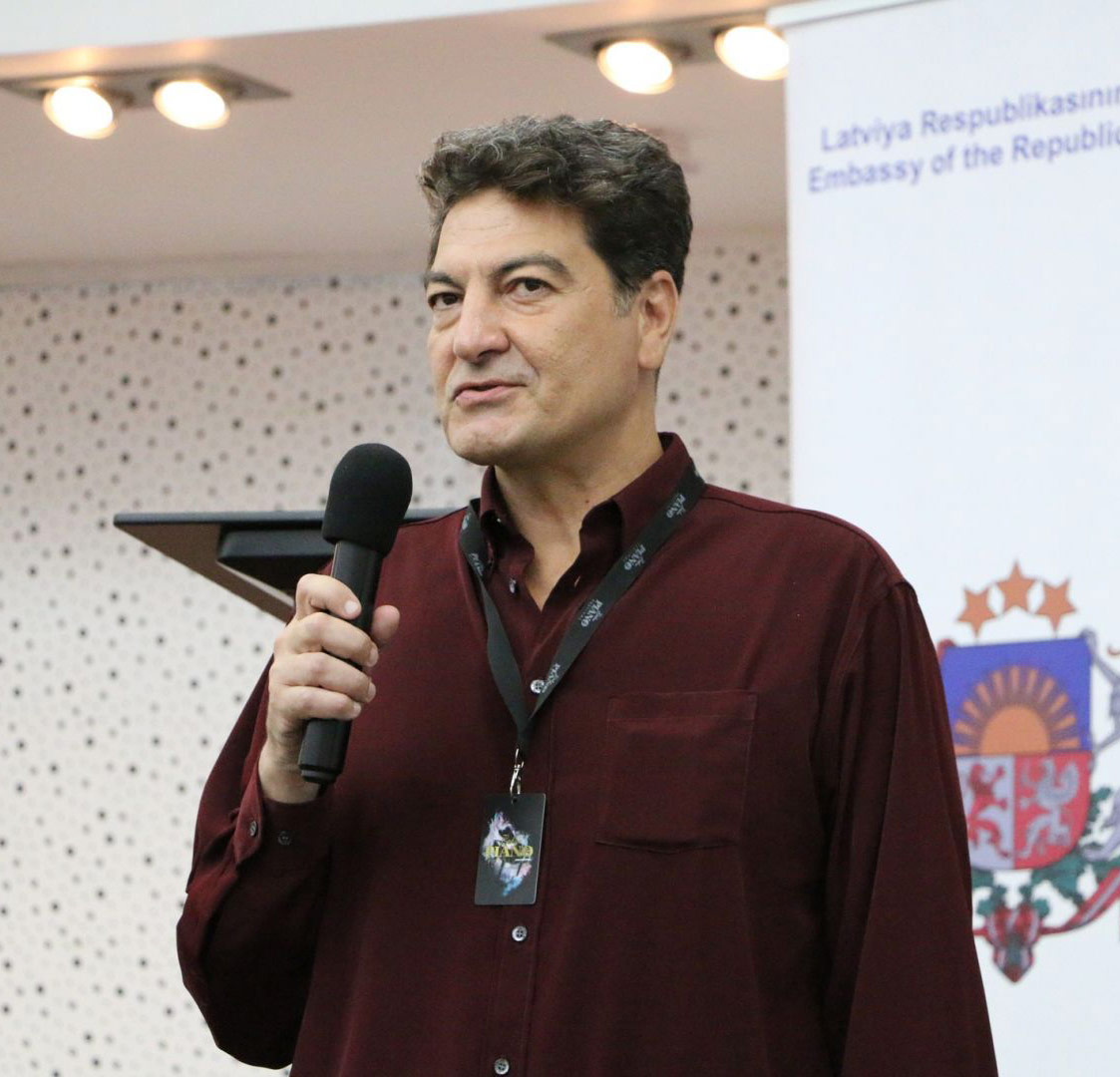RED TERROR OF THE BLACK-AND-WHITE TRAGEDY / Publication of article by Ulvi Mehdi
Author: Ulvi Mehdi
Translated by kinoyazar.az
The security of the European community in the third decade of a turbulent century is being tested for its strength and faith in union-wide unity in the face of increasingly palpable external threats. Historically, the states of the eastern Baltic Sea area remain especially vulnerable.
Diplomatic missions of the Baltic countries constantly remind the world of the episodes of 20th-century occupation history, using the language of cinema as a form of historical testimony.
This time, the Embassy of Latvia in Azerbaijan organized a special screening of the film “Maria’s Silence” based on true events. The cinematic narrative of Stalinist tyranny in the 1930s is strikingly relevant to modern history and resonates with the tense atmosphere of the present. The world premiere took place at the 2024 Berlin International Film Festival, where the film received a special award from the Ecumenical Jury and evoked a strong response from international film critics.
The film’s poster is a visual homage to feminine nature, frozen in an elegant dance pas, as if captured by the remnants of the hammer and sickle. There is a clear reference to the Latvian constructivist artist Gustavs Klucis—a cult visualist and illustrator of the utopian constructivist era of the 1920s—30s, who, along with Malevich, promoted Trotskyist Soviet avant-garde agitprop. A historical paradox: though he was an active participant in the Soviet pavilion at the World Exhibition in Paris, the artist was soon lured into the USSR, arrested, and executed on charges of an alleged “The treason of Latvian nationalists”. This is the same tragedy experienced (or not) by the main character, Maria Leiko, a silent film actress of German expressionism and a star of the Weimar Republic’s theatrical stage.
February 3, 1938. A bloody date known as the “Day of Latvian Execution” at the Butovo firing range. Nearly the entire troupe of the Latvian theater “Skatuve” (Stage) fell under the wheels of repression. Within days, up to twenty thousand Latvians, residents of Moscow and the surrounding areas, were executed according to different sources. Stalin had become eager to annihilate an entire ethnic group—previously so loyal to the regime, so organically integrated into the revolutionary proletariat. The Red Latvian Riflemen, Lenin’s pride, symbols of Nordic discipline and revolutionary consciousness, became a scapegoat as the terror years branded them a “fifth column.” The era of clans gave way to the era of denunciations.
The Soviet-Latvian theater grew from the traditional “Overcoat” of Russian stage art: most actors were graduates of Yevgeny Vakhtangov’s studio. Founded in 1919 by director and actor Osvalds Glaznieks, the theater’s repertoire became a carrier of Latvian cultural identity in the multilingual and multinational Soviet Union. The troupe gained fame far beyond Moscow, touring across the USSR and abroad.
The tandem of director Davis Simanis and cameraman Andrejs Rudzats built a monumental portrayal in black-and-white aesthetics, where each camera movement reflects theatrical mise-en-scenes. Rehearsals and performances of “Skatuve” become a journey through an infernal backstage labyrinth, where the interplay of light and shadow weaves a tragic symphony. The Lithuanian duo of composer and sound director Justinas Staras-Paulius Kilbauskas deserves special mention. The final moments of the troupe’s life draw the viewer into an audiovisual twilight—an allegory of inevitable entropy. To the eyes of curators and censors of the punitive machine led by NKVD head Nikolai Yezhov, such nationally composed collectives were obvious paranoid signs of the “decadent influence of bourgeois freethinking.”
One of the most shocking scenes of the film is a sinister banquet where documentary truth merges with artistic myth. After a premiere performance, the troupe is gathered in a pompous museum hall for a Belshazzar-like feast with indecent dances, nude actresses, and grotesque orgies. Director Davis Simanis, a trained historian, claims that this “soft version” only partially reflects the more obscene and tragic reality of those days.
The image of Maria Leiko, portrayed by actress Olga Shchepitskaya, is filled with multilayered metaphor. The heroine is silent—but in her silence, everything is heard: observations of the ruling elite, of systemic hypocrisy, of the fading faith in justice. Her eyes, captured in close-ups, offer the only honest response to the unfolding lawlessness. The finale—a silent, mournful, stoic refusal to sign a denunciation of herself and her colleagues. Stoic silence as the ultimate act of artistic freedom.
Another recreated episode is the interrogation of the theater’s prima. It is known that the interrogations of the entire “Skatuve” cast were led by a Latvian-born OGPU-NKVD officer Leonid Zakovsky (born Heinrich Stubis). His on-screen, almost photographic double, Girts Kesteris, chillingly convincing from the first frames, radiates death’s icy breath. The film’s portrayal of this paradoxical figure stands as a monumental act of bitter historical truth for Latvian cinema—an acknowledgment that Latvians were not only victims of repression but also its executioners.
As the final credits roll, the feeling lingers: history always returns—sometimes as fact, sometimes as tragic farce, a closed loop of déjà vu. The message is clear for all nations that endured Stalinist terror. Especially today, as Stalin’s cult is being rehabilitated in the public consciousness. How close are we to the moment when night knocks and broken locks become everyday occurrences again? In the era of Yezhov’s purges, entire ethnic groups were led away from their apartments without trial, shipped off in wagons, or had forced confessions beaten out of them. A reminder that the right to one’s own opinion is a matter of life and death.
